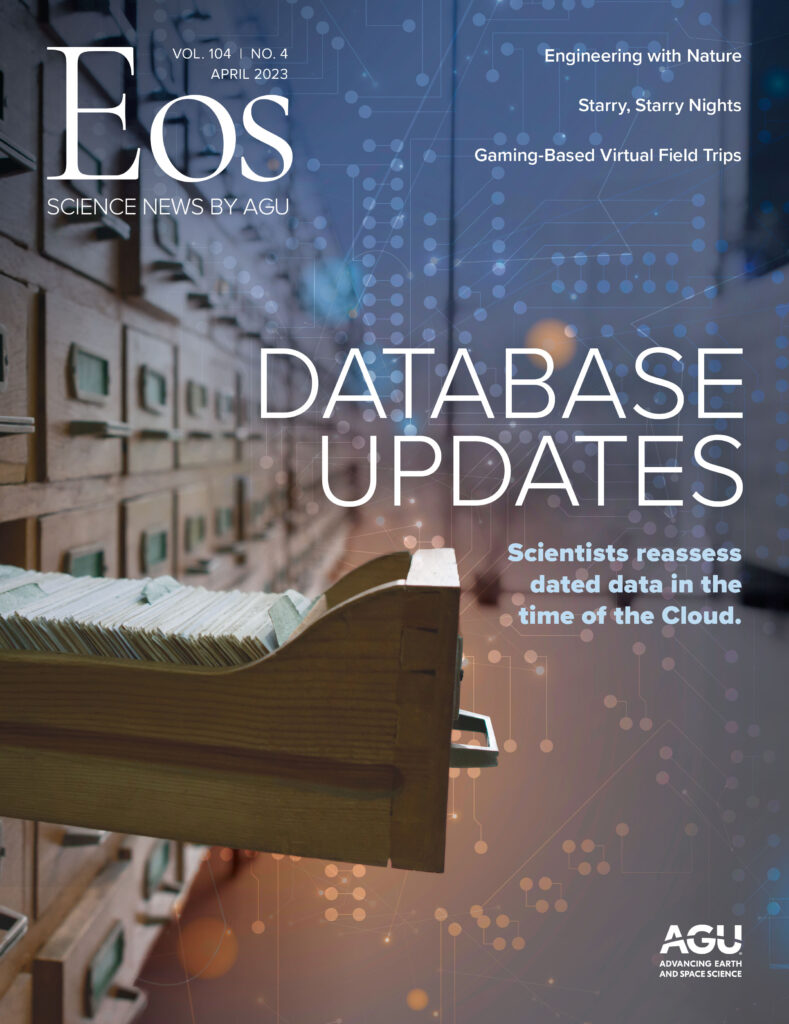We are awash in dated data: punch cards, 9-track tapes, Earth itself.
Well, “Welcome to a New Era in Geosciences Data Management”! In a mission to make such data findable, accessible, interoperable, and reusable (FAIR) in the time of the Cloud, scientists are poring over and reevaluating reams of paper, film, CDs, VHS tapes, and, yes, punch cards. These records fill floor-to-ceiling shelves of entire archives and more than a few offices of retiring geoscientists. Being FAIR is not always easy, we learn in Saima Sidik’s feature, but it’s always fascinating.
Those 9-track tapes? They’re what astronomers used to store data in the 1980s. The waves of technology that have crested since then—from cassettes to DVDs to today’s digital archives—are perhaps less of a sea change than what they represent: Scientists are no longer entirely tied to rarefied “telescope time” to access astronomical (and astronomical amounts of) data. Astronomer and science writer Katherine Kornei details how “Deluges of Data Are Changing Astronomical Science” and democratizing it as well.
No archives are more dated than the soil and sand of Earth, and yet none are less antiquated, say Krystyna Powell, Safra Altman, and James Marshall Shepherd in “Engineering with Nature to Face Down Hurricane Hazards.” More active hurricane seasons are requiring more aggressive engineering; natural and nature-based features such as dunes and berms provide flexible, resilient models for coastal communities to incorporate into disaster protection and mitigation plans. Engineering with nature, it turns out, benefits economies as well as ecosystems.
With oceans of data come seas of uncertainties. In their opinion “Overcoming the Challenges of Ocean Data Uncertainty,” authors Shane Elipot, Kyla Drushka, Aneesh Subramanian, and Mike Patterson argue that the goal is not to eliminate uncertainty in data but, instead, to better communicate its size and nature.
Updated databases are redefining the Earth and space sciences. Stay tuned.
—Caryl-Sue Micalizio, Editor in Chief


